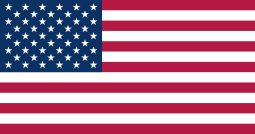The impact of China due to the U.S. review of key supply chain items and South Korea’s direction.
The Background for the U.S. Review of Key Supply Chain Items
President Biden has directed a review of key supply chain items in the U.S. supply chain. This is due to an increasing dependence on China for these critical items essential for future industries. While China is the U.S.’s largest trading partner, there’s an underlying intention from the U.S. side not to just watch China’s infinite growth.
Additionally, the vulnerabilities in the U.S. supply chain became more apparent during the COVID period due to global division of labor. It was perceived as both an economic and security crisis.
The Biden administration aims to achieve the following through this review:
- Isolation of China
- Strengthening the U.S. manufacturing base
- Securing technological leadership
Types of Key Items in the U.S. Supply Chain
The U.S. key supply chain items are divided into four main areas and six industries.
Four main areas: Semiconductors, batteries, essential minerals, and pharmaceuticals.
Six industries: Defense, public health, information and communication, energy, transportation, and food.
Energy Sector
The subcategories within the energy sector include carbon capture, power grids, fuel cells, hydropower, large-capacity batteries, neodymium permanent magnets, nuclear energy, platinum group metals, solar power, and wind power.
These are constituted by 644 detailed items related to renewable energy and carbon neutrality.
In particular, there is a significant dependence on China for large-capacity batteries and platinum group metals. For large-capacity batteries, the dependence is 42.5%, and for platinum group metals, it’s 15%.
ICT
In the ICT sector, the subcategories include audio-visual equipment, computer equipment, other electronic parts, semiconductors, semiconductor/electronic components, and communication/network equipment.
It consists of a total of 387 items related to the ICT industry.
Especially for computer equipment, laptops, semiconductors, and communication/network equipment, there’s a heavy reliance on China. Over 90% of laptops are imported from China.
Public Health
Public health is constituted by subcategories like personal protective equipment (PPE), durable medical equipment (DME), pharmaceuticals, raw material pharmaceuticals, diagnostic drugs, and testing and diagnostic instruments.
It consists of the largest number, 1107 items related to medicine and pharmaceuticals.
Notably, in the areas of PPE and DME, there was a steep increase recorded (397%) compared to 2022 in China’s growth.
China’s Strategy on the U.S.’s Key Supply Chain Items
China is pushing for technological self-reliance in response to U.S. sanctions. In May 2023, President Xi Jinping’s quotations on scientific self-reliance were published throughout China. The content emphasized that, in fields such as semiconductors, quantum computing, and artificial intelligence, the nation’s survival and development can be achieved not through diplomatic relations with other countries but through technological independence, leading in scientific advancements, and autonomous innovations to respond to global risks.
China’s strategy for technological self-reliance serves as an effective means to overcome U.S. sanctions, especially in advanced technology fields like semiconductors. However, with most core intellectual property rights (IP) of advanced technology designs being held by countries like the U.S., pursuing technological independence without utilizing these IPs is practically impossible. Regardless, China is expected to strive for the indigenization of core technologies like semiconductors to overcome supply uncertainties and disruptions due to U.S. sanctions.
China is pressuring the U.S. and its allies using domestically developed technologies and mineral resources.
For instance, China is responding by regulating the export of technologies related to rare earths. Rare earths are essential materials that enhance the efficiency of motors and electric vehicles.
China manages its industries on a national level, and the state’s influence is potent. Thus, there’s a high likelihood that China might impose export restrictions on its advanced technologies in the future.
South Korea’s Direction in Light of the U.S.’s Review of Key Supply Chain Items
Thanks to the Inflation Reduction Act (IRA), South Korea is in a favorable trade position with the U.S. from a regulatory standpoint. However, given its geographical position, the country cannot ignore its significant export dependency on China. It’s crucial for South Korea to find a balance between the U.S. and China.
Prompt reactions from our secondary battery companies following the IRA have given us a leading role in exports to the U.S.
In response, Chinese companies, unable to deal directly with the U.S., have turned to South Korea.
They show intentions of entering the U.S. market through collaborations with Korean companies.
South Korea should leverage its position amid the competing interests of these two countries, acting as a mediator between the U.S. and China.
Given its high export dependency, South Korea’s survival strategy must ride the economic waves of both nations. Through this, the country should aim for a peaceful and efficient national interest.
Recommended Post on Website
Concept, Outlook, and Country-by-Country Trends of Rare Earths.
